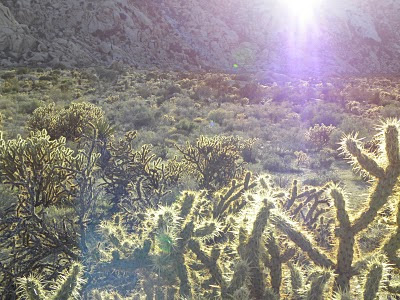New Layout for Calico Solar Project May Not Provide Adequate Wildlife Corridor

Tessera Solar and Stirling Energy Systems, the companies proposing to build the Calico Solar Power project in the Mojave Desert, filed details on an alternative layout for the site with the California Energy Commission (CEC). Although the companies claim that the reduced site footprint provides a 4000 foot wildlife corridor between the solar project and the Cady Mountains to allow desert tortoise and other species passage through the area, the maps presented in the documents filed with the CEC suggest that the layout falls short of this goal. The Calico Solar Project is currently the largest solar project proposed for the Mojave Desert that is currently under review by the CEC and Bureau of Land Management for approval. The project would be built on public land and would be partially funded by the taxpayers. The original proposed project would take up 8,230 acres, and potentially displace or kill at least 100 desert tortoises, and jeopardize the white-margined beardtongue, a rare


